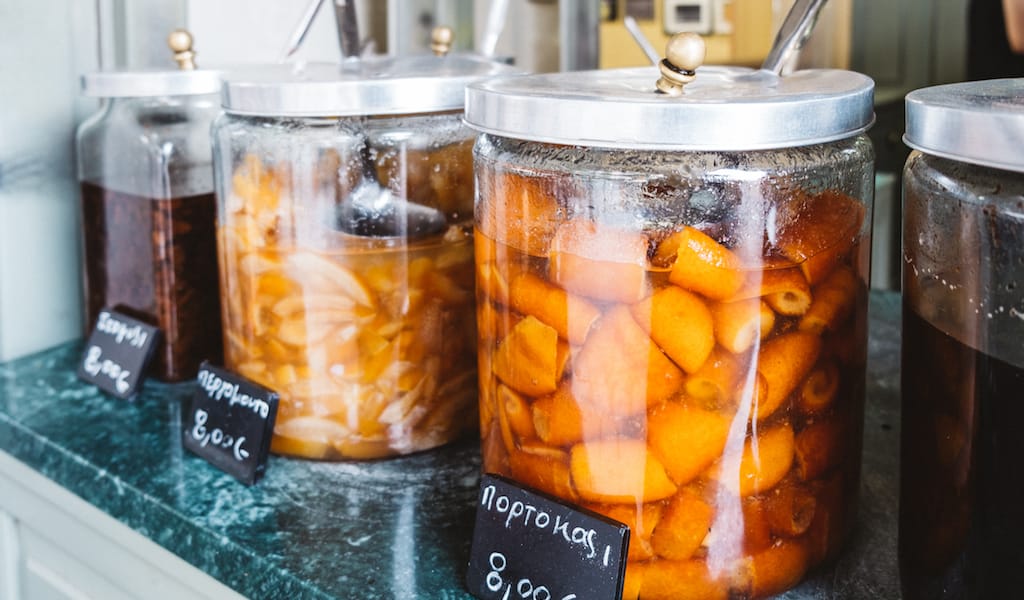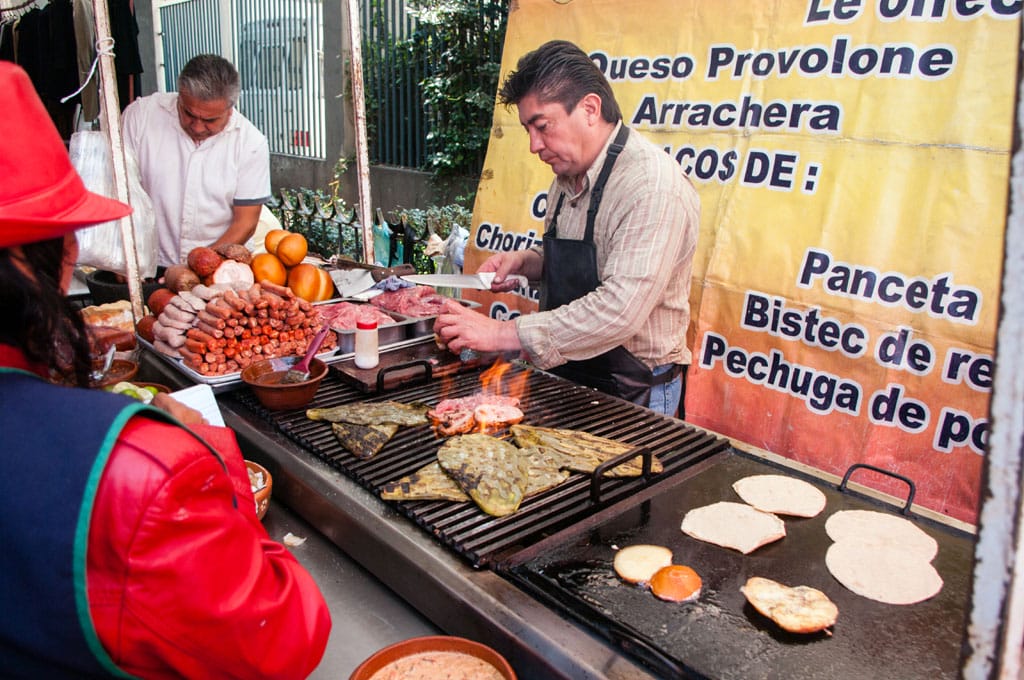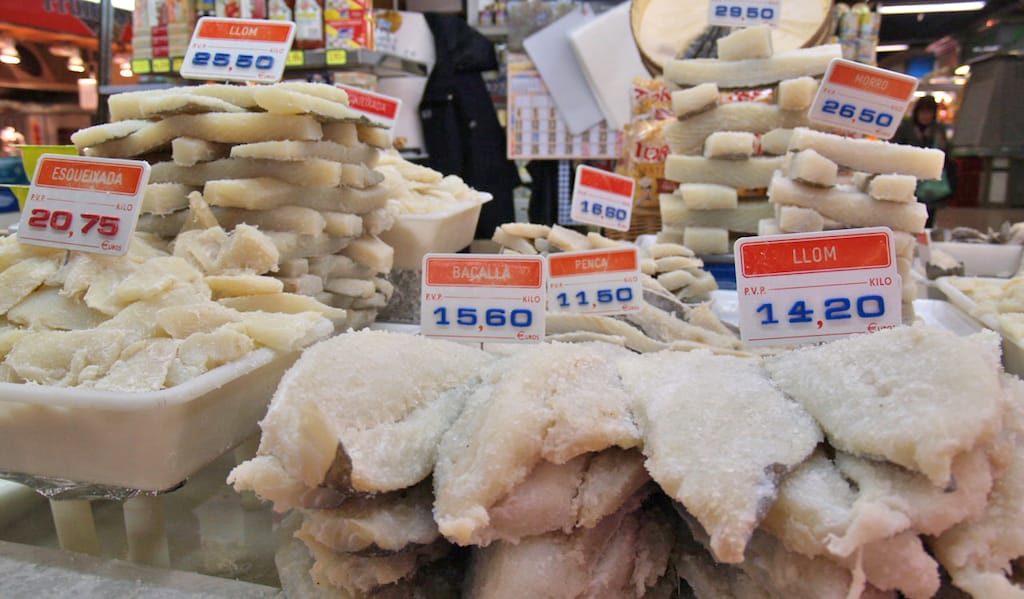A guest arriving at a Greek home should expect an overwhelming array of traditional welcoming treats that will be presented upon their arrival, from coffee and cookies, to cakes, homemade liqueurs, loukoumi and more. But there’s one sweet something that has long been linked with hospitality and welcoming in any proper, traditional Greek home: glyko tou koutaliou, or “spoon sweet,” a type of fruit preserve whose roots go way back to ancient times.
For centuries, preservation was a necessary part of the harvest – it was the only way to make excess fresh fruits and vegetables last for as long as possible. Based on historic references, we know that the most common preservation methods included sun-drying fruits and vegetables or preserving them in either honey or grape molasses (petimezi), which usually involved first boiling the fruit.
The ancient Greeks made something called melimilon (μελίμηλον): quince boiled in wine and then preserved in honey. It was through making this dish that pectin – a key ingredient in marmalade making – was discovered. Later, with the arrival of sugar to this side of the world and the gradual decrease of its price, preservation in sugar syrup begun.
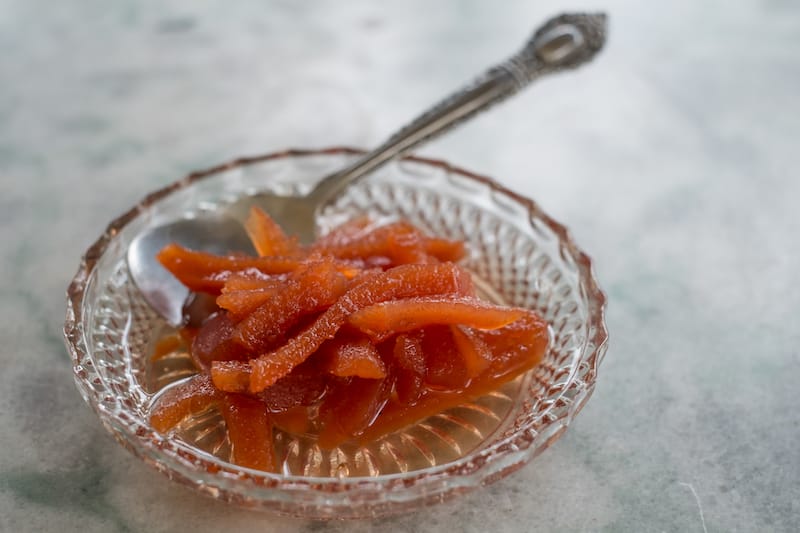
Spoon sweets are fruit preserves that differ from jam and marmalade mainly in terms of texture – the ingredient being preserved should be firm and in a thick, transparent syrup, unlike the soft and pulpy texture of jam and marmalade. They are primarily made of fruit, which can be sliced, grated or even left whole, like figs, sour cherries or grapes. It’s also possible to make them from just the rind, which is usually the case with citrus fruit like lemons and bergamot oranges, but also with watermelon – just the white part of the rind – in the summer.
You’ll also find spoon sweets made of unripened nuts, soft rind and shell included, as well as vegetables (tomato, pumpkin, eggplant and more) or even roots, like onion or beetroot for instance. A more recent trend in spoon sweets are those made from different types of mushrooms – while they might sound strange, they are actually quite flavorful.
But the most delicate and aromatic of all are those made of flowers, like fresh rose petals, newly blossomed lemon flowers and other citrus tree florets, or even jasmine.
Generally speaking, spoon sweets are made by boiling the fruit, vegetable or flower in sugar syrup with a lemon rind and infusing the mixture with spices or herbs like cinnamon, clove, vanilla, marjoram, rose geranium and more. Sometimes nuts are added too – most often whole white almonds – either to stuff the fruit, as with figs and tomatoes, or towards the end, to give it a crunch and an extra kick of flavor.
The most delicate and aromatic of all are those made of flowers, like fresh rose petals.
The procedure slightly differs according to the ingredient at hand but as a general rule the product’s texture should be firm and juicy, the syrup must be aromatic, thick (but not crystallized) and clear, and the final result should not be too sweet (despite the name). Fruits and vegetables that are not quite ripe are often used to achieve the perfect balance between bitter/sour and sweet.
There are several tricks to maintain color and texture. For example, in order to keep the firm texture of cherries, tomatoes and apricots, some Greeks – especially islanders – steep them in whitewash (lime and water) for a couple of days and then rinse them well before boiling; others just put them in lemon juice for a couple of hours.
Presentation matters for this type of preserve – there’s a reason they’re called “spoon” sweets. Back in the day, women would proudly present an entire jar of homemade preserves to their guests. Alongside it would be a handful of spoons and special small plates. (The most common being the small vintage crystal glass plates with ornate designs, with matching little spoons.) The guests would have to use their teaspoon to serve themselves from the big jar, placing a spoonful-portion onto their little plate. A glass of fresh cold water was (and still is) always served alongside the sweet treat.
Nowadays, a teaspoon of the preserve, or even one whole larger piece of the preserved fruit or vegetable, is presented directly in the center on the little plate, nice and neat. Alternatively, it is also common to top yogurt with a spoon sweet, with quince, rose petal and sour cherry flavors being particular favorites. Sour cherry spoon sweets are also typically served on top of the traditional ice cream flavored with mastiha (mastic, a resin that is widely used in Greece as an aromatic).
Spoon sweets are prepared all over Greece, and each region or island has its own special flavors. The island of Andros is particularly known for the spoon sweet of whole, unripened walnuts made with honey and clove. On Andros and Tinos, they make our favorite lemon flower spoon sweet. On Kos, Nisyros and Santorini, they stuff small tomatoes with a whole almond and spice it up with clove. The island of Aegina is famous for their pistachio spoon sweet made with unripened pistachios, while the island of Milos is known for a spoon sweet made with pumpkin and blanched almonds, also known as koufeto. On the mainland, the villages on Mount Pelion are famous for their crab apple spoon sweet, while the Peloponnese is known for citrus fruit preserves, made either with the whole unripened fruit, sliced or just from the rind.
Monasteries are also particularly known for preparing exceptional spoon sweets from their seasonal harvest, with which they welcome visitors and guests. Taxiarchon Monastery in Aegion on the Peloponnese is particularly famous for their rose petal spoon sweet, the St. Panteleimon Monastery on Mount Athos is known for their cherry spoon sweet and the Chrysopigi Monastery on Crete makes a uniquely delicious spoon sweet from potato and vanilla.
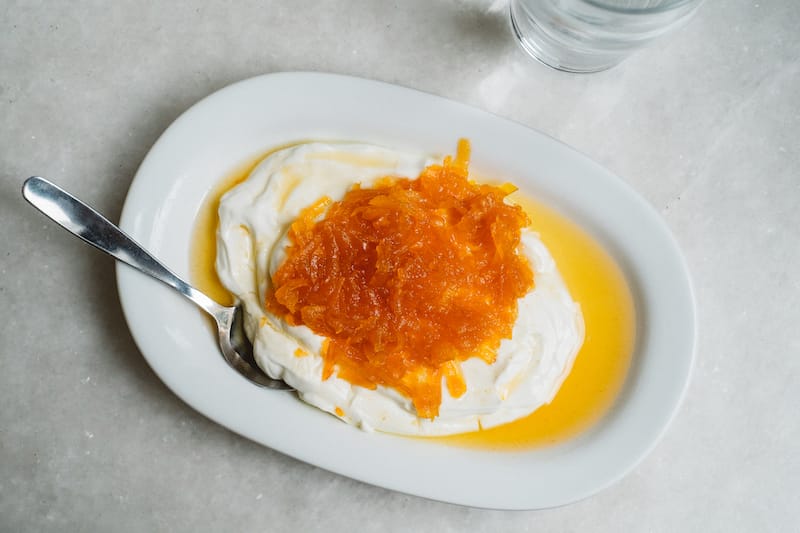
But not everyone is able to visit a monastery or traditional home. So if you’re in Athens and looking to sample some spoon sweets, try going to Mokka right by Varvakeio, the central food market. Mainly coffee roasters, they also sell treats traditionally served with coffee, including spoon sweets. By the window you’ll notice large colorful jars full of different spoon sweets. You can buy them by the kilo so go ahead and try a little bit of each one. Right next door is their café, where you can enjoy a cup of coffee and a portion of spoon sweet of your choice.
At Ta Karamanlidika tou Fani, a favorite restaurant and deli not far from the market, they make one of our favorite carrot spoon sweets, which they serve over creamy Greek yogurt.
Cherchez La Femme, a traditional style kafeneio near Syntagma Square, serves an indulgent mastiha-flavored ice cream topped with an aromatic rose petal spoon sweet that we just adore or a sour cherry spoon sweet that’s equally as scrumptious. Both spoon sweets are also served plain, if so desired.
Several yogurt bars around the city offer a variety of spoon sweets as an option to top your fresh creamy yogurt. We recommend Fresko in Thissio, a small yogurt bar with handmade yogurt.
Varsos, a pastry shop in Kifisia, is famous for spoon sweets, particularly the sour cherry version. If you happen to take a stroll in the northern suburb, don’t miss out on one of their famous yogurts topped with sour cherry spoon sweet.
To Pantopolio tis Mesogiakis Diatrofis is among our favorite spots in Athens to shop top-notch products made by small producers from all around Greece. Here you will find a big variety of exceptional spoon sweets from all over Greece, from tomatoes to mushrooms, rose petals to citrus fruit and many more. These jeweled jars make a great gift or souvenir.
Editor’s note: Our recurring Building Blocks feature focuses on foods and ingredients that are fundamental to the cuisines we write about.
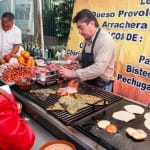 September 29, 2015 El Parrillón
September 29, 2015 El Parrillón
Update: This spot is sadly no longer open.
Tacos are everywhere in Mexico City, and […] Posted in Mexico City July 17, 2019 Burmese Bites
July 17, 2019 Burmese Bites
Update: This spot is sadly no longer open.
Stretched to translucence by a series of […] Posted in Queens March 12, 2020 In the House of Cod
March 12, 2020 In the House of Cod
In Spain, preserving the rituals of Lent – historically a period of 40 days of prayer, […] Posted in Barcelona
Published on October 04, 2018
Related stories
September 29, 2015
Mexico CityUpdate: This spot is sadly no longer open. Tacos are everywhere in Mexico City, and though the options are many – chicken, al pastor, carnitas, carne asada – the basic ingredients tend to be the same wherever you go. That’s why, as we were walking the aisles of Tianguis La Raza on a Sunday morning,…
July 17, 2019
QueensUpdate: This spot is sadly no longer open. Stretched to translucence by a series of acrobatic, table-slapping wrist flips, then stretched just a bit further until it seemingly must tear under its own weight, the palata dough passes from the hands of Myo Lin Thway. In a moment, other hands take over. Perhaps they fill…
March 12, 2020
BarcelonaIn Spain, preserving the rituals of Lent – historically a period of 40 days of prayer, penance and pious abstinence from eating meat that leads up to Easter – was up until the second half of the 20th century mostly the responsibility of priests. Nowadays, however, it is more often the country’s chefs who are…







































